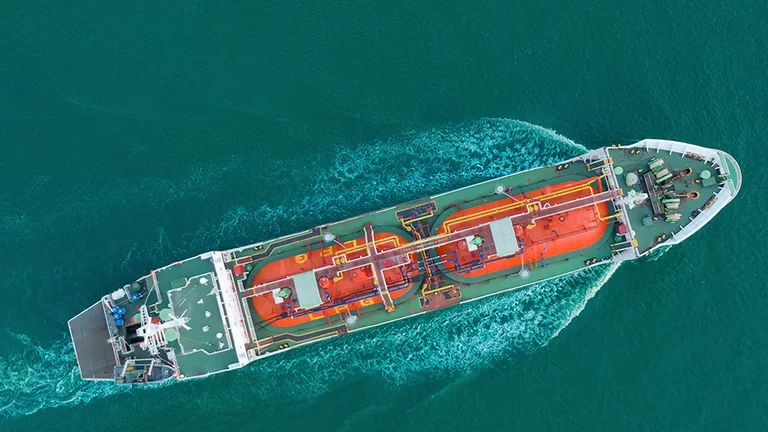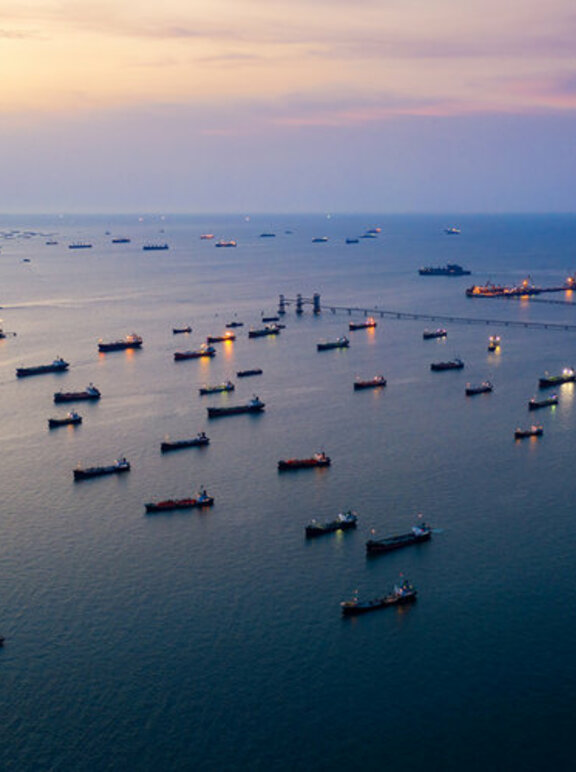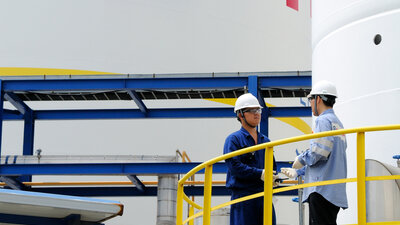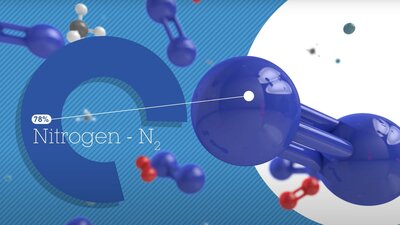Air Liquide’s Turbo-Brayton solution
A tale of success in the maritime sector
Published on February 19, 2020
5 minutes

Air Liquide’s Turbo-Brayton cryogenic solution has seen spectacular commercial and industrial upturn, especially in maritime transport. Other promising applications are also emerging in the field of renewable energy. Read the success story.
Used initially in the space industry to keep biological samples cold on the International Space Station (ISS), the Turbo-Brayton technology, in development by Air Liquide for the past decade, is now a huge commercial success. "It has been working onboard the ISS since 2006, without stopping or any maintenance at all. And this performance has not gone unnoticed," explains Cécile Gondrand, Product Manager at Air Liquide advanced Technologies (AL-aT).
Consequently, this solution finds a promising market in the maritime transport of Liquefied Natural Gas (LNG) between producing and consuming countries. Onboard the large LNG tankers, it prevents boil-off – the LNG vapors produced during transport. The gas, cold in its liquid state (-160°C), warms up and partly evaporates (up to 6 metric tons per hour). This economic loss is doubled by a negative environmental impact in terms of CO2 emissions. "Shippers, most often oil companies, are becoming increasingly sensitive to Energy Transition and are requiring shipowners to fit their ships with systems that prevent these emissions," says Nicolas Blanchard, Gas & Cryogenics Business Unit Director at AL-aT.
These are exactly the type of losses that Turbo-Brayton prevents. And it uses disruptive technology to do so. "Whereas other technologies allow the capture of the gas once it has escaped to reliquefy it, our system pumps the LNG into a storage tank and then reinjects it at a lower temperature, which cools everything and stops more gas escaping! This is the “subcooling principle"", explains Yannick Dupont, Deputy VP Sales Turbo-Brayton and Cryogenic solutions at AL-aT. A principle which has quickly gained popularity! "Our first installation on an LNG tanker worked perfectly, and the solution’s reputation has swept across this sector," adds Vincent Billot, Turbo-Brayton Program Manager at AL-aT. To date, some fifty Air Liquide Turbo-Brayton units have been sold and installed on LNG tankers, the major part in new construction but also some for retrofitting (operation which consist in redesigning and modernizing) existing ships.
Turbo-Brayton by Air Liquide is an efficient and extremely reliable system. Its cooling power is available instantly from standby mode and can be adapted from 0% to 100% by changing the motors’ rotation speed, all the while maintaining high output. And all this is possible with low electricity consumption. Another major advantage for users is the system itself! Compact, it is delivered mounted on a chassis, ready to use, for optimized installation. So, all you have to do is plug in the unit and start it up. It fits together kind of like LEGO® on the ship during construction or a retrofit. Last but not least: the maintenance interval is 5 years!
€180 million in orders recorded over the past two years
Full gas ahead for ocean freight
In order to resupply them with LNG, bunker tankers will be developed to serve as genuine floating gas stations! What’s more, many of those already available today are equipped with Air Liquide’s Turbo-Brayton solution.
"We will also be able to install this system on the small LNG terminals which will be built along the coasts to store LNG. So, there are a lot of market opportunities for our Turbo-Brayton equipement emerging" says Yannick Dupont.
24 Turbo-Brayton systems produced in 2020, compared to one in 2015
New applications for renewable energy
The efficiency and reliability of Air Liquide’s Turbo-Brayton solution also opens the door to other applications. It is used to liquefy biogas from methanation units for household, agricultural and industrial waste. In its liquid form, the biogas can then be easily transported to its point of use, for example bio-NGV (Natural Gas for Vehicles) stations which dispense this sustainable fuel for the transport of goods or people. These types of initiatives are already being developed by the Group in the Nordic countries.
This system also makes it possible to cool high-voltage superconducting cables, which carry two to five times more power than traditional cables, and therefore to prevent energy loss. It is an opportunity to encourage the development of renewable energy production sites (wind, solar) away from consumption areas. "We are currently performing feasibility tests with a client who wants to use submarine superconducting cables, which need to be cooled to -200°C, to carry the electricity produced by faraway off-shore wind farms to the coast," concludes Cécile Gondrand.
Learn more on the Air Liquide advanced Technologies website
The turbomachinery, the technological heart of the system, is manufactured in AL-aT’s workshops in Sassenage (Isère, France), where it uses mechanical parts supplied by SMEs (small to mid size enterprises) in the region. "We went from 15 units in 2018 to 90 in 2019. In order to handle this, we have invested in our industrial facilities and recruited a large number of employees: welders, boilermakers, fitters, and supply chain and lean specialists to manage a large and growing flow of parts per year and optimize the workstations. We have also provided support for our subcontractors in this rapid ramp-up," comments Arnaud Favre, Turbo-Brayton Operations and Supply-Chain Manager at AL-aT.


